Written by Dr. Sarah King, PT, DPT
Do you sometimes feel like your feet are stuck to the floor or your hips are glued to your chair, despite your best efforts to move them?
This symptom, called “freezing”, has been seen in 30-67% of people diagnosed with Parkinson’s, with a higher rate of incidence in later stages.
While everyone has unique freezing patterns, some common triggers include turning in tight spaces, walking through doorways, walking in narrow hallways or crowded places or changing walking surfaces (e.g., carpet to hardwood).
As soon as you notice freezing symptoms creeping up on you, it’s important to address them so you can prevent them from worsening over time.
The first line of treatment is often dopaminergic medications that aim to keep you in an ON state for longer. However, evidence suggests there is a cognitive component of freezing that medication and deep brain stimulation (DBS) do not address effectively.
This is why the best long-term treatment option for Parkinson’s freezing is non-pharmaceutical, non-invasive and focuses on retraining your brain for success.
Here are six actions you can take to help minimize your freezing of gait.
#1 – Train with a Parkinson’s Physical Therapist
The very best way to avoid a freezing episode is by working with a Parkinson’s physical therapist to specifically address your freezing symptoms.
Identify Your Triggers and Retrain Your Brain
Your therapist will evaluate your unique triggers and symptoms and guide you through an exercise program that incorporates cognitive challenges and physical training. This will help retrain your brain to use more effective walking patterns and reduce freezing episodes.
Those with more intense freezing symptoms may benefit from short (3-5 day) “anti-freezing” intensives, like the one they offer at the PWR!Gym in Arizona.
Find a Parkinson’s Physical Therapist in your area here.
In addition to working with a Parkinson’s physical therapist, here are five more general strategies you can try to help avoid a freezing episode.
#2 – Wear the Right Shoes
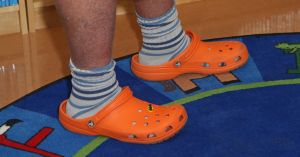 Shoes that are easy to slide on may solve one problem but cause another. When your shoes are too large, too loose or lack proper support, they can cause your feet to slide around inside your shoes or toes to curl under to help stabilize yourself.
Shoes that are easy to slide on may solve one problem but cause another. When your shoes are too large, too loose or lack proper support, they can cause your feet to slide around inside your shoes or toes to curl under to help stabilize yourself.
This lack of stability and impaired balance can trigger your freezing symptoms and leave you stuck, not to mention at a significantly higher risk for falling. Choose supportive and well fitting shoes with a closed toe and heel.
#3 – Walk with Intention
Walking has always been automatic, but due to lack of dopamine (Parkinson’s hallmark trait), your brain now needs to focus more attentively on putting one foot in front of the other. When you are walking in a space that may trigger you to freeze, try drawing attention to your walk with some of these strategies.
Pick a Target
Stand up tall and pick a destination in the distance you’d like to walk to. For example, the end of the hallway or around the bed and into the closet. Say aloud how many steps you think it will take to get there. Start with one large step and count each step you take aloud until you reach your destination.
Create Step-Overs
If you’re able to, place horizontal lines on the floor with painters tape. This can be a great visual aid to cue you where to step in narrow spaces. Aim to step over the line, hitting with your heel.
Focus
Cut down on distractions and multi-tasking. Remove rugs and anything else on the floor that could distract you while you walk, including small animals. Avoid carrying anything in your hands or talking on the phone when you’re walking. This will allow you to focus fully on where to place your feet.
#4 – Keep Your Feet Wide
Freezing is most common when you are turning or changing directions. Typically, your feet end up close together and, thus, your ability to shift your weight from one foot to another is diminished.
When you’re turning, imagine you have a small balloon between your feet you don’t want to step on. If you’re changing directions, do so with a wide stance or your feet staggered one in front of the other.
#5 – Keep Your Head Up
Try this experiment: Stand up and look toward the horizon. Feel where your weight is distributed in your feet. It should be evenly distributed front to back and side to side. Now, look down at the floor between your feet. Did you feel your weight shift into your toes?
If your weight is in your toes, it can exacerbate festination and freezing. Instead, walk with your head up and shoulders back, redistributing the weight through your feet. You should be able to lift and wiggle your toes. If you have to temporarily peek down at the floor (say, to look at a horizontal line to step over) that’s okay, just make sure to look up as you get going.
#6 – Shake Off Your Stress
Freezing episodes are more frequent and intense when you’re anxious. Anxiety leads you to tense up your hands, arms, shoulders and jaw which raises stress in your body and feeds your freezing, making you even more anxious!
To combat this vicious cycle, deliberately give your body a good shake before you start walking. Start with loosening and shaking your hands, arms, shoulders, neck and tongue. Take a deep breath, stay as relaxed as possible and set out towards your destination!
Once you’re frozen, how do you get unstuck?
The strategies above will help you prevent a freezing episode from occurring, but inevitably you’ll find yourself frozen somewhere. What to do then?
I teach all of my clients the “5S” Method for getting unstuck from a freezing episode:
- STOP
- STAND TALL
- SHAKE IT OFF
- SHIFT YOUR WEIGHT
- STEP
Learn more about the 5S Method (and watch the video demonstration) here.
Cheers to getting unstuck and on with your life!
About Dr. Sarah King, PT, DPT
 Sarah is a passionate Parkinson’s advocate who founded Invigorate Physical Therapy & Wellness, an online wellness practice 100% specialized in Parkinson’s disease, to help her clients get out of overwhelm and into action by connecting them with the tools and support they need to thrive over the course of their Parkinson’s journey. She lives in Austin, Texas with her husband (and favorite human), Matt.
Sarah is a passionate Parkinson’s advocate who founded Invigorate Physical Therapy & Wellness, an online wellness practice 100% specialized in Parkinson’s disease, to help her clients get out of overwhelm and into action by connecting them with the tools and support they need to thrive over the course of their Parkinson’s journey. She lives in Austin, Texas with her husband (and favorite human), Matt.








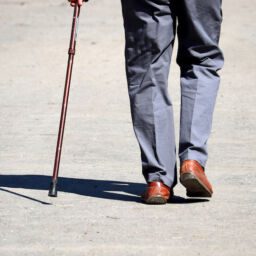
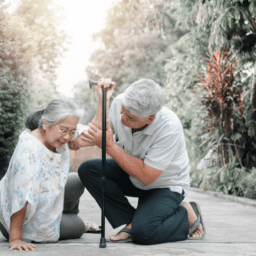
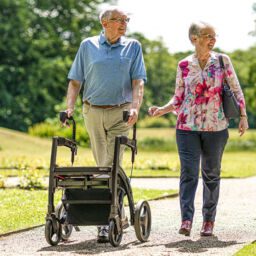


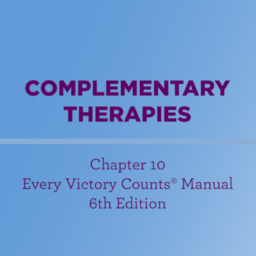




My husband just started having significant freezing episodes; I found this article very helpful
What a quality of life changer for my sister. She and her caregivers at Greer Gardens assisted living in Eugene, OR, quickly learned this 5S information. Transitioning her is now taking a tenth of the time and she no longer complains or cry’s. Thank you from all from all of us.
Hi Nancy, we’re so glad to hear that this information has been useful for you and your family.